Abstract: The announcement on March 15/16, 2025, of the apparent detection beneath Giza’s Second Pyramid, the pyramid of Khafre, of a whole series of megastructures has caused a viral sensation. The claims made by the Italy-based Khafre SAR Project are so fantastic that it was felt necessary to catalogue what has been released into the public domain, examine the reaction of the outside world, and comment on the suspected methodology behind the published results. Although important to remain sceptical towards these claims—achieved using a unique interpretation of Synthetic Aperture Radar (SAR) data—their potential connection with Giza’s cave underworld and parallels with ancient Egyptian cosmogonic myths seems important to discuss. We look also at the potential time frame of construction of any confirmed underground structures at Giza and speculate on a possible connection with Anatolia’s post-ice age Taş Tepeler culture.
Keywords: Synthetic Aperture Radar, Giza plateau, Second Pyramid, Khafre, Tomb of the Birds (NC2), Taş Tepeler, Karahan Tepe, Ogdoad, Hermopolis, Fayum depression, Younger Dryas, ancient cosmogonies.
Over the weekend of March 15/16, 2025, a press conference was held at the Castel San Pietro Terme in Bologna, Italy, the ramifications of which would change everything we thought we knew about the origins of ancient Egypt. A team of researchers led by Professor Corrado Malanga from the University of Pisa, Professor Filippo Biondi with the University of Strathclyde, Scotland, and ancient mysteries author Armando Mei announced their detection of a whole series of megastructures existing beneath the plateau at Giza. 1
Using open-source Synthetic Aperture Radar (SAR) data provided by Capella Space and Umbra, and derived from satellites in orbit around 400 miles above the earth’s surface, the team say they have been able to identify the presence of various unique features both within Giza’s Second Pyramid and, more interestingly, beneath it.
Inside the pyramid, they have detected five vertical spaces similar in appearance to the Relieving Chambers above the King’s Chamber inside the Great Pyramid. These structures, described by the team as “djed” columns, like those seen in ancient Egyptian art representing the backbone of the god Osiris, are evenly spaced out within the base of the Second Pyramid.
Underneath the pyramid, the team have determined the presence of what they say are eight hollow cylindrical tubes or wells that penetrate the bedrock for a depth of 648 metres (0.4 of a mile), with a spiralling pathway around each one. These vertical pipes are positioned in two rows of four, which their SAR-based images indicate are oriented north-south. At their termination, the shafts converge into two large cubic chambers, four into one and the remaining four into the other. Each of these chambers has an estimated size of approximately 80 metres (262 feet).
Further structures apparently go off in different directions, leading to the team’s strong belief that beneath the pyramid field is a possible underground city. They identify this with the concept of the Halls of Amenti, the otherworldly destination of the deceased following their passage through a cave-like realm known as the duat.
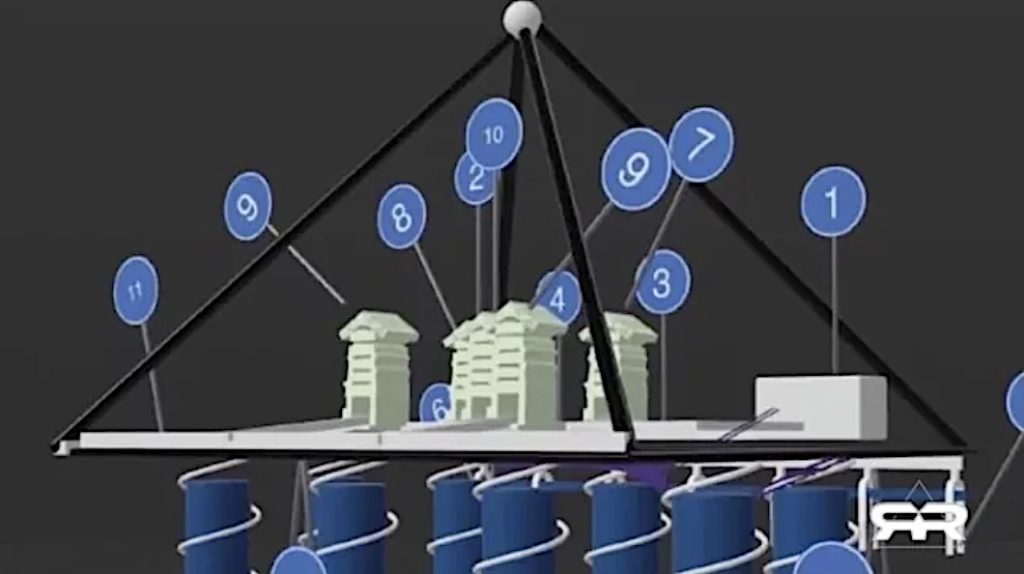
Figure 1. The five “djed” chambers detected inside the Second Pyramid at Giza by the Khafre Project. Credit: Khafre SAR Project.
SAR Satellite Data
All of these findings were obtained in the following manner. Satellite transmissions that are reflected off ground-based objects contain seismic data that are recorded by ground-based computers. Mathematics is applied to the raw data received to create composite 2D and even 3D images that carry information, not only about the density of targets, but also their position. Finished images are colour-coded so that blue indicates dense areas, while brighter colours, such as reds, greens and yellows, can signify the presence of hollows, cavities and voids.
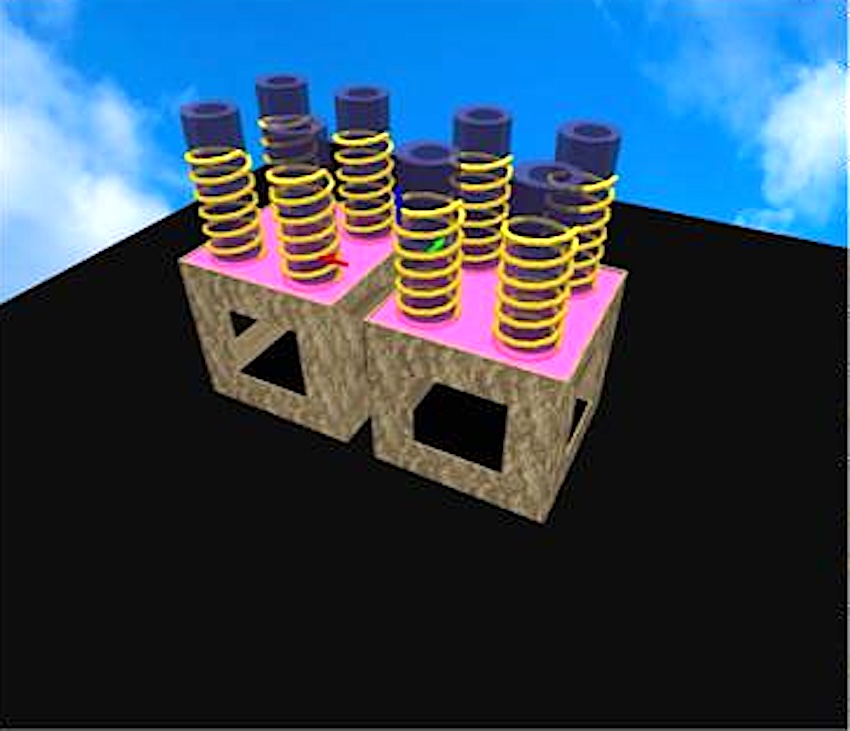
Figure 2. The eight vertical wells and twin cubic chambers detected in the bedrock underneath the Second Pyramid. Credit: Khafre SAR Project.
The accumulation of raw SAR data is achieved remotely, meaning that the Italian team did not need consent from the Egyptian Government to conduct their work. This was first brought to the public’s attention in 2022 with the publication of a paper in the peer-reviewed journal Remote Sensing. 2 In this, Biondi and Malanga announced that they had used SAR data to determine the existence of previously unknown voids in the Great Pyramid. At the time, their findings raised little interest among the Egyptological community since their work was heavily overshadowed by the discovery of a huge void existing above the Great Pyramid’s Grand Gallery by the Scan Pyramids Project. 3 Biondi and Malanga did touch upon the potential existence of the five “djed” chambers they had detected inside the Second Pyramid, but the paper’s main focus was their work on the Great Pyramid.
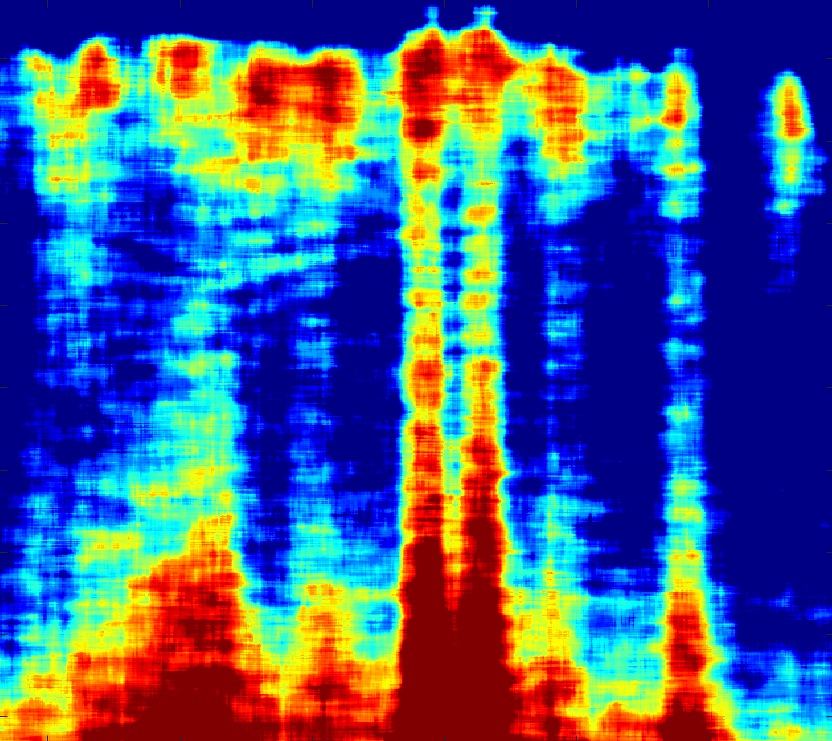
Figure 3. SAR-based image showing anomalies thought to indicate the presence of eight vertical tubes or wells beneath the Second Pyramid. Khafre SAR Project.
Viral Sensation
Once the discoveries made by the Khafre SAR Project in connection with the Second Pyramid at Giza were revealed to the packed audience at the two-day conference at Bologna in March 2025, the internet went into overdrive, with ancient mysteries commentators, YouTube influencers, and online journalists doing their best to bring these discoveries to the widest possible audiences. The whole thing became a viral sensation, which, after a few days of bouncing about the internet, was finally picked up by the international news media. Some onlookers, however, were more sceptical of the claims.
Online Interpretations
Geoffrey Drumm, for instance, of “The Land of Chem” YouTube channel released an hour-long video examining whether or not the Khafre SAR Project team had correctly interpreted the composite images produced using the SAR data. 4 He highlighted the fact that structures that should be seen both in the Great Pyramid and in the Second Pyramid do not show up, whereas other apparent voids do. Plus, the team’s detection of a void above the Great Pyramid’s Grand Gallery is located nowhere near that of the similar void detected by the Scan Pyramids Project. These are problems that the Khafre Team will need to address if their claims are to be accepted.
Despite these drawbacks, in Drumm’s opinion the anomalies seen beneath the Second Pyramid were likely present. Among his other conclusions was the fact that the underground structures formed part of the massive cave system accessed via the Tomb of the Birds (officially known as North Cliff #2, or NC2), which is situated within the cliff face at the northwestern edge of the plateau.
Matt Sibson of Ancient Architects, in his video assessment of the SAR data 5, admits he is unable to explain how the Khafre SAR Project created their visual data since it is outside his field of expertise. He asks that the Italian team offer complete transparency regarding the methodologies behind their claims so that the general public might better understand the findings. Sibson asks for relatable comparisons. One, he says, could be of an area of the Libyan desert, away from Giza, where no archaeological structures are expected to be found. This would provide a perfect comparison to the visual data created by the team in connection with the plateau at Giza.
The Khafre SAR Project has been able to provide one comparison away from Giza. On their website, according to Sibson, it is shown how SAR-based data enabled the team to detect not only tunnels inside the Gran Sasso d’Italia, a massif forming part of the Appennine Mountains of Italy, but also the Laboratori Nazionali del Gran Sasso (LNGS), a massive underground research facility situated beneath the mountain.
Regarding the Italian team’s interpretation of the SAR data relating to the Giza plateau, Sibson is unable to accept any of it, making it clear that the structures described go against everything known about human engineering and construction in any period of recorded history. What Sibson suspects is that the team may have detected natural faults and fissures within the limestone bedrock, along with extensions to its well-known cave system, which underlies the plateau. Like Drumm, he points out that this cave complex is accessed via the Tomb of the Birds and probably goes all the way to the Second Pyramid.
Many other key researchers in this field, such as Boston geologist Robert Schoch 6, who has worked tirelessly to highlight the greater antiquity of the Giza monuments, have advised caution in accepting the Khafre SAR Project’s interpretation of the raw data while at the same time encouraging the team to provide additional information on all aspects of their work at Giza.
Clearly, all new discoveries should be treated scientifically and critically, and any sensational or exceptional findings should be regarded with extreme caution. There is every reason to consider the possibility that the Italian team’s findings are incorrect, not only in what they assert their findings indicate but also in the extent and depth of the structures detected. What is more, the plateau’s water table, fed by the nearby River Nile, would have penetrated any deep underground structures at Giza, filling them with water and making them completely inaccessible to everyone.
This does not, however, mean that the Khafre SAR Project’s findings and interpretations of the data should be entirely discarded. Rather, some of it, as we shall see, could have validity in terms of the contents of surviving creation myths and foundation texts preserved on the walls of dynastic-period temples across Egypt.
Giza’s Cave Underworld
The immediate takeaway from the various claims and counterclaims concerning the Italian team’s proposals is that the proposed megastructures they see as existing beneath the plateau might well form part of Giza’s previously recorded cave system, something that both Drumm and Sibson admit seems likely. This cave underworld was rediscovered in modern times by Egyptological researcher Nigel Skinner-Simpson and the present writer following a five-year research study to determine the position of its entrance. With support for our expedition from Edgar Cayce’s Association for Research and Enlightenment (ARE), we were able to enter the caves on four occasions in March and April 2008. The ARE, as the research wing of the Edgar Cayce Foundation, has had a keen interest in finding what has become known as the Hall of Records. This is a chamber, or set of chambers, said to exist beneath the plateau within the life readings of the organisation’s founder, the American psychic Edgar Cayce. According to Cayce, the Egyptian Hall of Records will be found to contain the knowledge and wisdom brought out of the lost continent of Atlantis following its destruction around 10,500 BCE.
Whether or not the newly discovered structures beneath the Second Pyramid are connected to Cayce’s Hall of Records remains to be seen. What we do know is that SAR imagery from the TerraSAR-X satellite, recorded as far back as 2007, shows not only the caves discovered by Nigel Skinner-Simpson and the present writer, but also two dark linear shadows that begin in the vicinity of the caves lying beyond the Tomb of the Birds and converge on reaching the northwestern corner of the Second Pyramid. 7 These shadows almost certainly show extensions of the existing cave complex, which, as Drumm and Sibson point out, probably end in the vicinity of this pyramid, close to where the Italian team says they have discovered large underground structures.
As far back as 1977, the Stanford Research Institute (SRI), in association with Cairo’s Ain Shams University, detected large voids beneath the pyramid’s northwestern and southeastern corners, with further voids being detected at a depth of 23 metres and 31 metres (75.5 feet and 102 feet) below Belzoni’s Chamber, which is carved out of the limestone bedrock immediately beneath the pyramid’s central area. 8
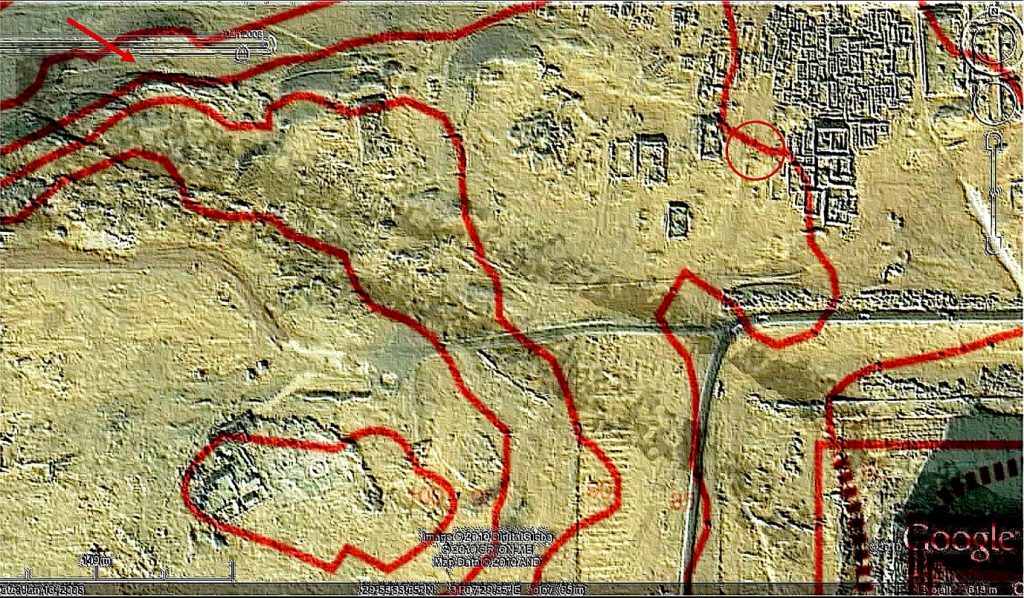
Figure 6. The TerraSAR-X imagery overlaid on Google Earth by engineer Rodney Hale showing the two linear shadows heading straight for the Second Pyramid. Credit: Google Earth/Rodney Hale.
On the pyramid’s eastern side is an enormous pavement of megalithic blocks weighing up to 50 tonnes a piece that form the roof of a huge platform that supports the weight of the pyramid. Although seen as purely structural by Egyptologists, there has to be a possibility that somewhere beneath this pavement is an opening leading into the subterranean structures detected by the Khafre SAR Project. This could be below its southeastern section, where the SRI team detected the presence of voids.
Egypt’s Elder Culture
If the Italian team’s interpretation of the SAR data is correct, then the likelihood is that the underground structures seen within the composite 2D imagery have very little, if anything, to do with the pyramid on top of them. Conventionally speaking, this was built around 2500 BCE as a tomb for the pharaoh Khafre, the fourth ruler of Egypt’s Fourth Dynasty. If this is correct, then the presence of the underground structures could provide evidence for the former existence at Giza of Egypt’s fabled Elder culture, which ancient foundation texts, such as the Edfu Building Texts, inscribed on the walls of the Temple of Horus at Edfu in southern Egypt, say existed before the occurrence of a major cataclysm.
This cataclysm was heralded by the appearance in the sky of an “enemy snake”, who brought about a period of darkness, along with a violent flood that drowned the earliest inhabitants of a primeval island variously described as the Island of the Egg, the Island of the Flame, and the Island of the Primeval Ones.
Such stories probably record the memory of the hypothesised Younger Dryas impact event, which today is thought to have occurred around 10,800 BCE. Extensive studies into ice cores and lake sediment, along with dateable stratigraphic data, indicate that this impact, caused possibly by exploding fragments of a comet, instigated a nuclear winter, which lowered the temperature to such a degree that, along with the release of ice melt waters into the Atlantic Ocean, triggered a mini ice age. This lasted for a period of 1200 years, bringing us to 9600 BCE, the timeframe of southeastern Anatolia’s highly advanced Taş Tepeler culture. Across a period of approximately 1500 years, through till around 8000 BCE, at least a dozen ritual centres were constructed in and around Anatolia’s Şanlıurfa province, each consisting of multiple stone enclosures containing anthropomorphised T-shaped pillars, often with twin monoliths at their centres.
Taş Tepeler in Egypt
What we can also say is that either direct or indirect contact existed between the inhabitants of Taş Tepeler complexes such as Göbekli Tepe and Karahan Tepe and Egypt’s Nile Valley. This is surmised by the knowledge that stone tools used by the Taş Tepeler communities of southeastern Anatolia have been found in Egypt. For instance, a type of arrowhead known as the Helwan Point, first discovered at one of the highly advanced Epipaleolithic settlements at Helwan, located within sight of the future site of the Giza pyramid field, has been found throughout the Levant as well as at a Taş Tepeler site in the heart of the ancient city of Urfa (modern Şanlıurfa). Further examples of the Helwan Point have been found at Neolithic sites in Egypt’s Fayum Oasis. 9
Is it possible that rock architecture even more elaborate than that recently uncovered at the Taş Tepeler site of Karahan Tepe 10 was sculpted out of the limestone bedrock at Giza? Did these technologically advanced peoples revere Giza as a place of their ancestors? Could this have been because of the presence either on or underneath the plateau of surviving structures belonging to Egypt’s long-vanished Elder culture?
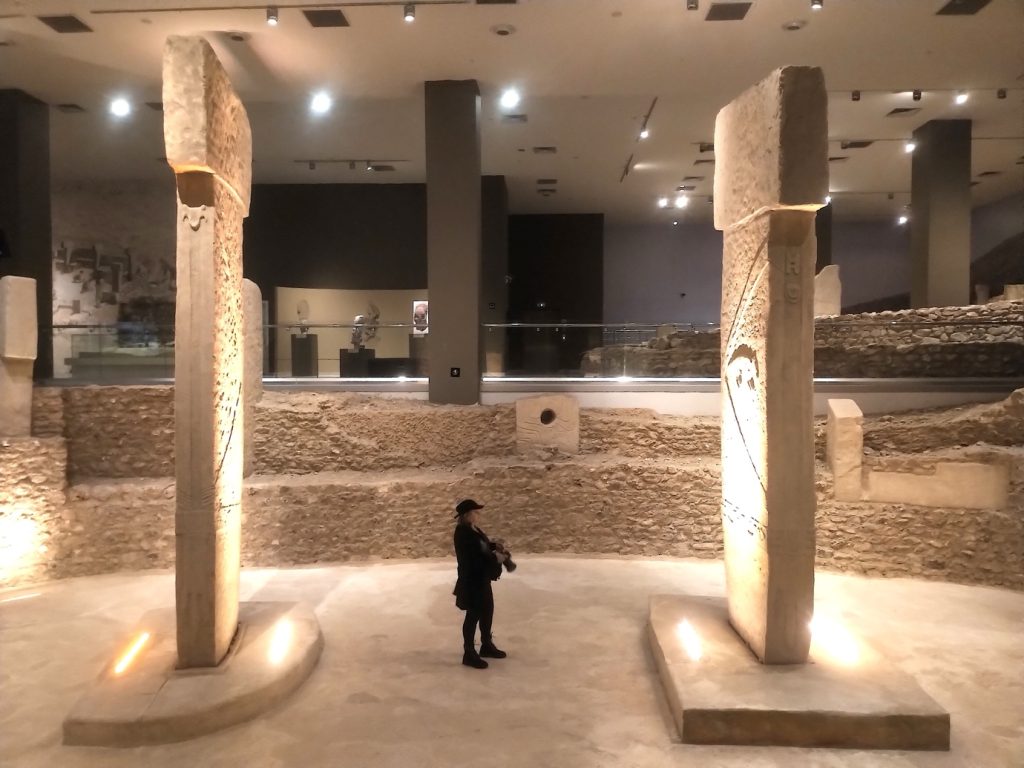
Figure 8. Reconstruction of Göbekli Tepe’s Enclosure D in the Şanlıurfa Archaeological Museum. Credit: Andrew Collins.
Such a scenario might seem farfetched, or speculative at the least, but it is supported by the Edfu Building Texts. These tell us that following the great cataclysm, a new people arrived to re-occupy the primeval island of creation, where the ‘ghosts’ of the Primeval Ones or Eldest Ones still lingered. 11 Was this a memory of the arrival in the Nile Valley of members of the Taş Tepeler culture? Were they responsible for the creation of these megastructures now thought to exist beneath the Second Pyramid? Or did they simply add to monuments and structures already present? Both scenarios could be correct. Certainly, the level of engineering achieved by Taş Tepeler at sites like Karahan Tepe, in particular, indicates that its highly sophisticated culture could very easily have been responsible for the construction of megalithic buildings and large structures in Egypt.
The Tomb of Hermes
Supporting this idea is the fact that medieval Arab Egyptian sources record that Sabian peoples from the ancient city of Harran, in what is today southeastern Turkey, would embark on pilgrimages to Giza in order to venerate the Second Pyramid as the tomb of Hermes, one of the legendary founders of their culture.
How then did the Sabians come to believe that the Second Pyramid concealed the tomb of Hermes? He, it can only be assumed, was perhaps a Hellenized form of the Egyptian god Thoth, described in ancient texts as the keeper of records. Is it possible that accounts of Hermes being buried at Giza are a distorted memory of structures existing beneath the Second Pyramid?
Elsewhere, the present writer shows that the legacy of the Taş Tepeler culture was inherited by the Sabians of Harran 12, meaning that their interest in Giza could well have come from their Neolithic forefathers. Was this what caused them to return to Egypt on a regular basis in order to pay homage to one of their divine founders? (Their other legendary founder of the Sabians was said to have been Seth, also known as Agathodaimon, who was thought to be buried in the Great Pyramid.)
The Eight Ogdoad
The fact that eight tubular shafts or wells have been interpreted as existing beneath Giza’s Second Pyramid brings to mind the creation myth of the city of Hermopolis, the cult centre of the god Thoth in Middle Egypt. This myth speaks of eight primeval beings known in Greek as the Ogdoad (pronounced og-do-ad), meaning the ‘Eightfold’ (their original Egyptian name, ḫmnyw, derives from the word ḫmnw, meaning “eight”). There were four pairs of Ogdoad, four males and four females. Although depicted in human form, the male Ogdoad have the heads of frogs, while their female counterparts bear the heads of snakes. The first pair to come into being were Kuk and his female counterpart, Kuket. Their names come from the ancient Egyptian word kkw, meaning “darkness.” The next pair to emerge were Nun and Nunet, their names deriving from the word nun, a reference to the primordial waters of creation.
Existing in the primordial darkness before the act of first creation, the Ogdoad bring forth the cosmic egg that splits apart to become the material universe and everything within it. This includes the first land to emerge out of the primeval waters of chaos, which gradually expanded to become the land of Khem, in other words, ancient Egypt.

Figure 10. “The Hermopolitan Ogdoad” from the temple of Philae. From Maspero, G., The Dawn of Civilization – Egypt and Chaldea, 1897, London: Society for Promoting Christian Knowledge, p. 148. Public domain image.
It is quite clear that the initial pair of Ogdoad, Kuk and Kuket, were considered twin personifications of an undivided, dualistic consciousness believed to exist within a state of perpetual cosmic darkness. From this emerged the next pair, Nun and Nunet, representing twin male-female aspects of the primeval waters of creation. Is it possible that this cosmogony of the Ogdoad alludes to the existence and function of the eight tubular well-like structures beneath the Second Pyramid at Giza, which are likewise situated in four pairs of two?
If these tubular shafts are present beneath the plateau as has been proposed, then like the Ogdoad, they must have existed in complete darkness. In addition to this, they would undoubtedly have interacted with the local water table, which would have risen and fallen in accordance with the River Nile, which in the distant past would have been much closer to the pyramid field. Local legends held to this day by the inhabitants of Nazlet el-Samman, the town located on the eastern edge of the plateau, speak of a vast lake underneath the plateau. If this body of water either did, or still does, exist then there seems every reason to suspect it would have been seen by the dynastic Egyptians as an underworld manifestation of the primeval waters of Nun.

Figure 11. Karahan Tepe’s Structure AB showing the carving skills of the site’s Taş Tepeler inhabitants. Credit Andrew Collins
As the writer has pointed out elsewhere, rock-cut structures uncovered at the Taş Tepeler site of Karahan Tepe, such as Structures AB (the Pillars Shrine) and Structure AA (the Pit Shrine), may both have been filled with water that was seen to symbolically represent the primordial waters, referred to in various ancient religions as the Cosmic Ocean. 13
The Book of the Fayum
The Second Pyramid’s association with Hermes, the Hellenic form of Thoth, makes it possible that the story of the Ogdoad originally came from Giza. How exactly the Ogdoad came to be associated with Hermopolis in Middle Egypt is a deeper puzzle, although it is the current writer’s belief that after Giza, the Ogdoad became associated primarily with the Fayum depression, situated around 100 kilometres (62 miles) southwest of Cairo. This was the main cult centre of Egypt’s Twelfth Dynasty (circa 1976–1794/3 BCE), dedicated to two main deities, the crocodile god Sobek and his mother, the hippopotamus goddess Neith.
A Greco-Roman text known as the Book of the Fayum, which, although only written down towards the end of the dynastic period, records the foundation stories associated with various cultus places once located in the proximity of the Fayum Lake, known anciently as Lake Moeris. According to its account, the Ogdoad were primeval beings instrumental in the creation of the world. One story, for instance, relates how the Ogdoad are said to have dug out the lake, which was afterwards filled from below (presumably via springs or wells) by the primeval waters of Mehet-Weret, the Great Flood. Out of this emerged the sun in the form of the crocodile god Sobek, the son of Neith, the female personification of the Great Flood. 14
This creation story is firmly linked with the Fayum region, and not Hermopolis, where the earliest mention of the Ogdoad comes from the Eighteenth Dynasty (circa 1550–1292 BCE). In the knowledge that the Book of the Fayum seems to record age-old legends associated with locations in and around the Fayum Lake tells us that its account could preserve very ancient cosmogonic myths. Certainly, we know that Neolithic settlements were established there as far back as 5500-5000 BCE, and that these included at least one stone circle. 15 Thus, it becomes possible that the Fayum is somewhere where even older creation stories may have taken root. As previously mentioned, Helwan Points have been found at the settlements in the Fayum just as they have been at Helwan itself, making it possible that the role played by the Ogdoad in digging the hole out of which the primeval waters of Mehet-Weret emerged to become the goddess Neith, who gave birth to the sun, can perhaps be linked with Giza in its potential role as Egypt’s place of first creation.
Discussion
We have to remain extremely cautious, as well as sceptical, of the claims being made by the Khafre SAR Project with respect to what might lie beneath the plateau at Giza. That said, it should be reiterated that the team’s unique manner of interpretation of SAR-based imagery does suggest that they may have found something of great value to our understanding of the past. The potential links between the structures observed both with Giza’s existing cave underworld and with the cosmogonic myths associated with the Ogdoad, the Eightfold, make this a tantalising possibility. If these underground features were in fact either carved or enhanced by human hands then it seems unlikely they are of dynastic origin, with the strongest suspicion being that they are the result of activity on the plateau by a culture either directly or indirectly linked with Anatolia’s Taş Tepeler movement.
With all this taken into consideration, the Italian team should be encouraged to continue their work, while at the same time offering complete transparency of all their methodologies and procedures, so that their findings can be better accepted by the academic community.
Watch Andrew Collins interviewed by Hugh Newman of Megalithomania on the Italian team’s detection of underground structures at Giza. This video includes brand-new footage of the cave world beyond Giza’s Tomb of the Birds.
To download a PDF of this article, click here: https://papers.ssrn.com/sol3/papers.cfm?abstract_id=5196934
Notes and References
See the author’s book Beneath the Pyramids (The ARE Press, 2009) for a full account of the search for Edgar Cayce’s Hall of Records and the rediscovery of Giza’s cave underworld.
See also the full-length documentary on the quest to discover Giza’s lost cave world titled “The Lost Caves of Giza,” available to watch on YouTube at the following link: https://www.youtube.com/watch?v=LTEVvkL-l3Q
Thanks go out to Debbie Cartwright, Rodney Hale, Catherine Hale, Nigel Skinner-Simpson, Armando Mei, Hugh Newman, Gregory L. Little, John Van Auken, Helen Reznor, Katalin Erdmann, Nick Davies, and Geoffrey Drumm for their help in the creation of this article.





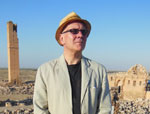

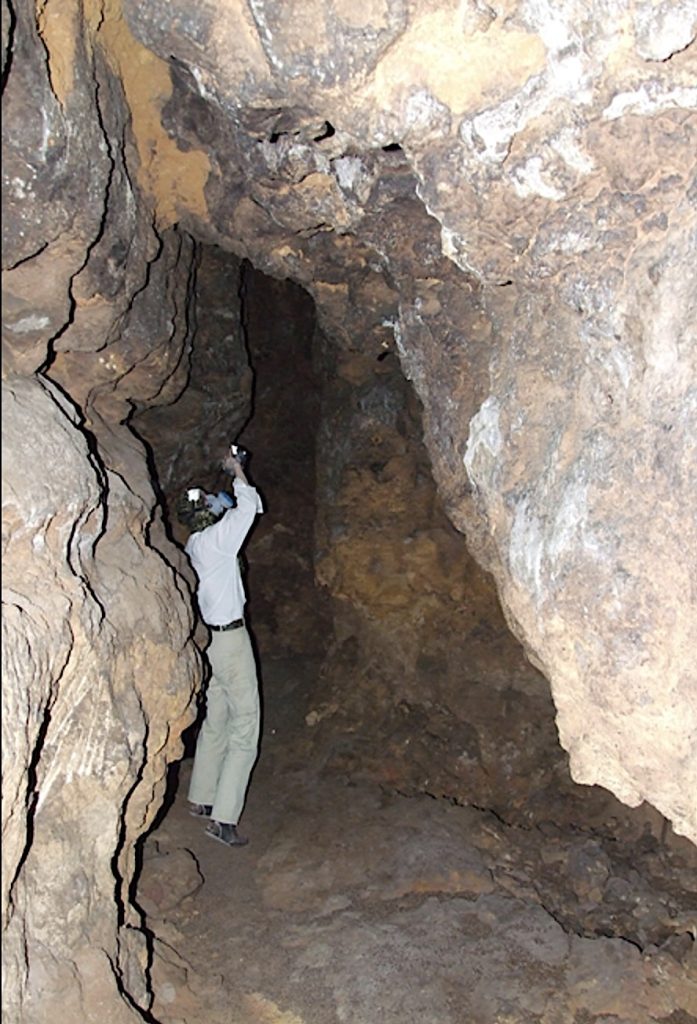
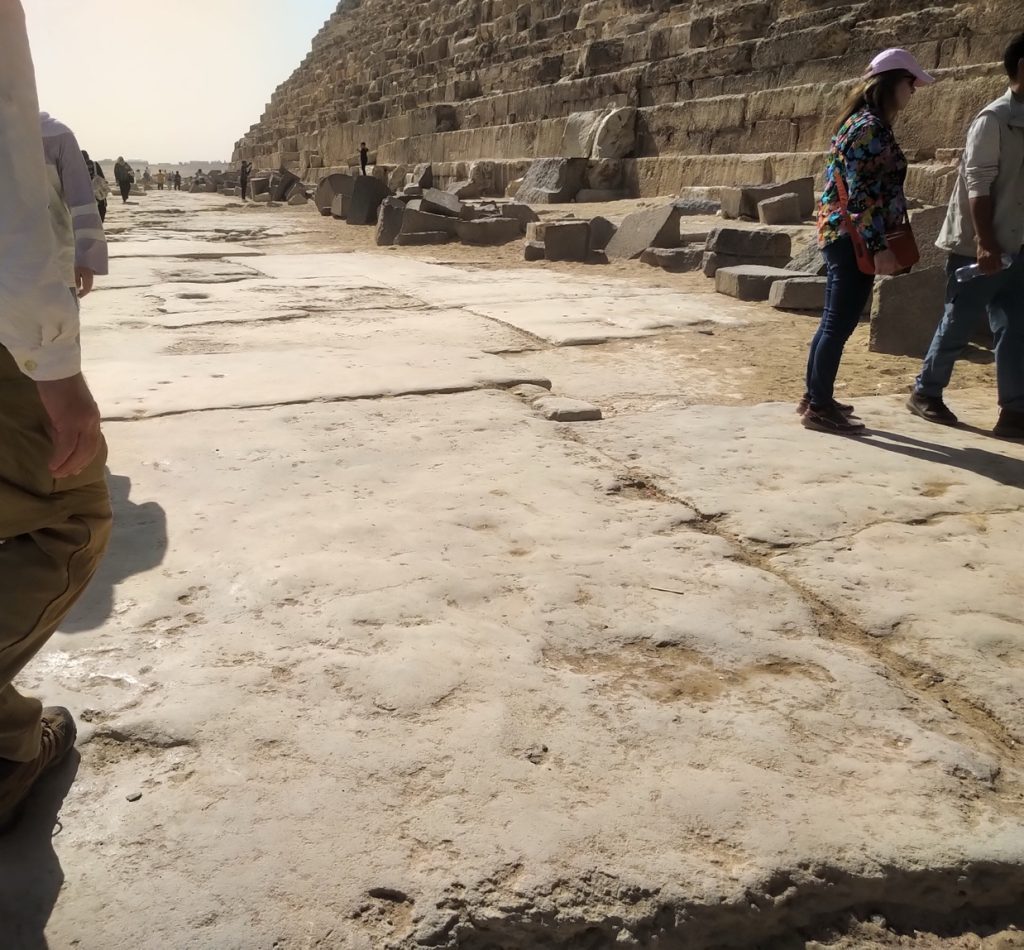
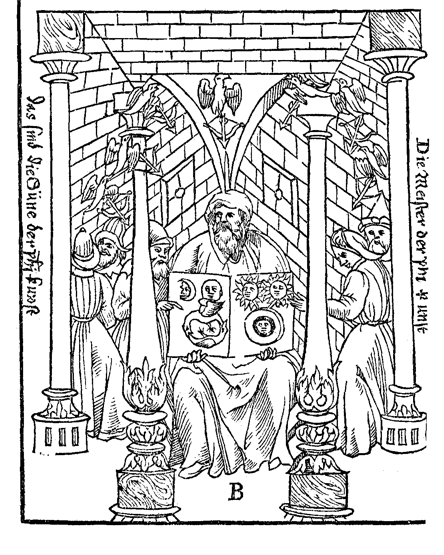
The problems raised by Geoffrey Drumm of the Land of Chem youtube channel completely vanish when it is realised that he is, mistakenly, expecting to find, within the specific 2D sections that he chooses to analyse, the presence of known existing features which, in fact, are not located within those specific sections, but elsewhere. The anomalies or “new” discoveries are the focus of the Italian paper, not known features. I hope he addresses this mistake of his in a future video.
The mistake may be possibly an artefact of contrived skepticism. A discovery as huge as this does merit equally huge grains of salt (possibly even the natron variety, for we are indeed granulating our existing edifice of the brains of archaeologists, usually made of stone, to reconstitute into the exquisite single-piece monolith of the new status quo, though it take millennia in the making); and the corresponding swing towards posturing aggressively against that which enthuses one the most is politically sensible in the current climate. However, it does seem to be an error by him, and not the Italian team.
“Regarding the Italian team’s interpretation of the SAR data relating to the Giza plateau, Sibson is unable to accept any of it, making it clear that the structures described go against everything known about human engineering and construction in any period of recorded history. ”
This is where Sibson must immediately avail himself of an English dictionary, and look up the definitions for the words “discovery” and “science”, pondering the meanings of each for a full month before politely apologising and excusing himself from further interest in this subject, owing to his obvious lack of familiarity with both concepts.
He probably has the same objection to the existence of Gobekli Tepe, Denisovans, the antikythera mechanism, and anything else that was found which, at the time, “goes against everything known about human engineering and construction in any period of recorded history”.
His position is literally cart-before-horse anti-science, irrational, and without any sense.
You cannot object to a discovery because it was unexpected! If it was expected it isn’t much of a flippin discovery innit
When I lived in Italy twenty years ago I was able to visit the levels underneath a number of churches and cathedrals – not only crypts, but palaces, with multiple levels underground, the lowest of which was always bare earth (the upper ones faced with marble or dressed stone) and rock, and always bounded by tunnels which vanished into the distance, with signs forbidding further exploration. Where the fuck did they go? How far? Did they connect with others?
This experience plus the known facts about the 200+ cities of multiple underground levels in Turkey, Mexico, and Egypt, of unknown date, really makes it far more likely to me that the ground beneath our feet is more often than not, most likely honeycombed with man-made cavities and structures about which we are told nothing.
A blackout of information does not equal the absence of facts. It is a red flag signalling where our attention is needed most urgently.
Kudos to the Italian team, to Graham and Andrew for this superlative milestone in humanity’s self-knowledge.
Line 54 of Maestro of a Lost World (Enki’s Journey to Nibru, ca 1900-1600 BC):
A AB BA ZI GA GAB SHU GAR NU TUK
On the waters of the abyss below to rise with its milk, a spreading hand… a pause… and the measure of the knot is taken.
This is the story of Hermes-Baba (AB-BA), the Harranian father figure, (see The Prophecies of Baba the Harranian by F. Rosenthal).
It gives the origin of the Indian myth of the churning of the Milk Ocean along with the stories of Hermes and Orpheus as cosmic musician(s) – the stirring of the waters takes place in the context of the pyramids of Giza which also figure in this Sumerian text.
The mention is made deliberately on line 54 (tablet in the Ashmolean Museum) because it is a precession number. As we see at Angkor Wat, there are two teams involved in tugging on the snake rope in order to make the waters rise (presumably in this case the Nile): 54 + 54 = 108.
“That which is above is like unto that which is below” – Hermes.
And now, with this news, where do we believe we are?
Below, as we in our slumber had assumed?
or now, in light of this news, are we not above a vast reflection in the very earth under our lil tootsies?
Is this world, the one we live in, really the world “above”, and not “below” at all?
Who is to say that either life or humanity evolved entirely on the surface of Mother Earth anyway, rather than deep, deep in her womb? The Duat or Twat is the dyad, where one becomes two as two be-come as if one.
Separately, whilst the shamanic or religious or magical or mystical or supernatural aspect of Egyptian culture is understandably prominent in our expectations of discoveries like these, the “scientific” or practical or material aspects seem to me to be strongly asserting their place with each nuance we learn.
Natron was the “sorcery”, or indeed chemistry, very, very simple chemistry at that, which made their geopolymers that pass for granite and basalt, as proven now by Marcell Foti. Simple, no magic or demons needed. Likewise, the electromagnetic and electrochemical aspects of the designs and functions of things like the Osirion and the internal machine-like aspects of the pyramids themselves, plus the obvious understanding the Egyptians had of the conductive or insulating properties for various stones in terms of electricity, heat, magnetism, and other field forces, combined with the plain fact the Earth is an enormous generator, reservoir, battery, etc. etc. for simple but massive forces along all these lines, combined with the Egyptian excellence in natural philosophy and engineering, all this suggests to me that not only the “soulful” aspects but very largely, the more mundane, or material, aspects of the structure are likely to be of immense interest.
I do not believe they would carve a mile down into bedrock for religious or shamanic or religious purposes, any more than they would build a six million ton pyramid that looks like a chemical processing generator of electricity or something, to function as a tomb for an insecure wanker. I really don’t think anyone was quite that mental or easily led. I reckon they did it to build something absolutely necessary for life in the here-and-now. Not just a shelter, but something astonishing, some kind of instrument or machine, a static machine that dealt with cosmic forces. And it may have been developed during millennia of being stuck down there because surface conditions (above) were intolerable.
The entire surface of Earth should be accurately mapped with ground-penetrating radar to a depth of fifty miles, including all “secret” and military bases. Fuck em. They work for us. Knowing our own history is what unites us. How many legends or myths have us crawling out of the ground? Made of clay? That’s our origin, right next to the shrooms. I don’t think life began on the surface, it just ended up here, above. And a fat lot of good that’s done us!
An excellent and timely article! Thank you.
It’s clearly nonsense based on the technology itself. They not only misunderstood what they are seeing, they are flat out lying about the capabilities of the satellite.
We’re expected to believe it can penetrate better than our version of Lidar on earth which also can’t see that far down.
My guess it’s a shadow..
You know they misinterpreted something, I know they did about something else, clearly they are knowingly lying
That’s vague as. Make an effort!
Thank you sir.
Absolutely wondeful research, cannot wait for further updates
And this is where you learn (hopefully), that Collins and yes even Hancock, are not interested in truth or discovery, indeed, they are employed in the full-time activity of distraction and disinformation. Of distortion and misdirection. In the case of the new Giza discoveries, we have two extremely highly qualified university professors who would literally be destroying a lifetimes work and dedication, who would be throwing away their careers, their reputations and incomes if they were to be attempting some big con job. And what would they gain from doing this? Absolutely nothing. All the context of this discovery point to it being extremely likely to be true… and all the context of Hancock and Williams point to them being engaged in attempting to portray the opposite.. to make you believe that the truth and is lies, just as they continuously engage in attempting to make their own lies the truth in the minds of the public. Don’t believe it! Do your own research. And be extremely critical of any of these highly successful voices that profess to speak the truth and alternative to mainstream propaganda, because the fact is sadly, if they have a high profile, a large reach, and a continuous presence, then the highest probability is that they are disinformation agents who are not worth your time to listen to.
Literally who the fuck are you, what the actual fuck does any of what you just said actually mean, and how does it relate to anything ANYBODY has said? Graham has said NOTHING about the discoveries except that he thinks it needs more of a look before he feels it right to have anything to say about it – a respectful and open position. Collins has done a great job of summarising the discourse thus far in public space. Fuck knows what’s coming down this particular pipeline, nugget man, but I hope it’s better than the literal embodiment of nuance-free distraction trolling which your own contribution has brung us.
Shut up I’m high,
N
Here Biondi explains it all https://www.youtube.com/watch?v=b513P5g7XmQ
I say to Andrew Collins and you, Graham an Robert, the same thing I said to the Italian team: I’ve been researching pyramids in theory for 60 years, and for 53 years manufacturing, building, and demonstrating the effect of the pyramid shape. I’ve been manufacturing and building them since 2001. There are more than 15,000 users and 5,000 doctors who use them. But I also research Egypt (more than fifty trips since 2004), so I’ve written a few books, and my intellect can say many things. But my Soul just wants to shout out loud to you: THANK YOU, THANK YOU, THANK YOU! Because you are a wonderful galaxy of HEROES.
Andrew. Nice report. Great job in summarizing the issues. Look forward to learning more about what lies under these enigmatic structures!
Gratifying that Space Aliens have not (yet!) made an appearance.
Been at other sites. Here is my armature reply to it all.
I’ve kinda brain stormed this a while back I sent my information off to Curious Being.. It goes like this Based on looking at the Sphinx and denoting the fact there is much water worn lines down those side walls. The Dry land of today says “NOPE”, there is a different story missing. Then take in the fact the desert area to the west n north of there. Wasn’t there a whale skeleton found there? then there has to be some other climate change there too. Then, I also heard there was some half life age or like that uranium that is way to refined to have not been mind and refined. Just putting those thoughts together plainly there is some sort of other story really going on there. There is way to much stuff that does not line up as a chronological state of events. Add in Golbekli tepie (sp) Things are OLDER. This is just looking at the basic topographical. We have not looked at weather – storms, climate changes… If there was the top of a pyramid as having a gold cap stone. THAT has to be the biggest lightening rod gathering point that has ever existed. Just per say Moses spoke to GOD. Then there is yet another factor that can be in existent there. Then add in Noah and the other spooky side of that history Enoch. OK, THERE is just what way to much happening and centering in and around there. My brain has sort of concluded a something significant originated in and around there. Add in the Nephelium, Anunnaki, and what ever else. What was the greatest past event that whiped out man. The great flood. Could there be an understanding of things that a given spot on the planet that if one directs and via chamber acoustics, electrification, the tectonics, resonating harmonics, oh what is the frequency vibrational factors a singular location space that when a good number of LIGHTENING strikes can create a capacitance like chamber under the pyramid that is focusing a burst of energy to the IRON core of this planet and then hits it. Then what a tilting of the earth, a total plate tectonics shift that creates the water wave heights to flash flood the earth and also distorting the static charge of earth and sky for the water under the natural mantel to just do the static discharge of rain and everything else for that flood. What if that is sort of known as the rule or method of the magnetic polar shifting earth rotational shift that can also be why our known poles to have had the Green vegetative state of life. The Antarctic bores shown the facts of hey there was loads of green life down under the piles of snow and ice bores.
Oh I have worked in the Granite MFG industry and I know how difficult that stone is and how hard it is to shape and sculpt it. Diamond impregnated metals are used to cut stone in and means of truth and speed. I’ve also used sand blasting to shape carve that stone surface for tomb stones to look like a rosette or anything floral in nature. I’ve also designed machines to aid in automation of equipment to cut and shape stone. Even did some of that stuff known as gold leafing some letters or names on those carved surface.
Oh Hawas isn’t he the one who put the plugs and caps in or on the Sphynx? Can’t believe him. And simply by the means of this world or even International concerns and discoveries do they really want to cut off the research and means of them earning more real money earned by world coming there to visit and spend there earned money. There is something else going on by the Egyptian culture that makes no sense. Yes deny it creates the dramatization stage of drawing more controversial headlines and or revenue. The bath water is nearly toxic not a cleaning solution. So baby out with the bath water?
I believe that what Filippo Biondi is doing is using principles and computational techniques of Seismic Tomography to look underneath the surface of structures and the Earth, but instead of using seismometers to record the waves that reach the surface, he is using SAR data from satellites. It sounds OK in principle, but I have a few major questions:
1. Why doesn’t he mention seismic tomography? For starters it would provide a lot of credibility in his statements, as it is a pretty old research field (a possible answer is that he wishes to exaggerate his innovations, but there are other possible interpretations, such as that he doesn’t wish to be scrutinized by that particular scientific expert community, and instead just by SAR experts who have never used such methods before and have no real understanding and expertise in them)
2. Why can’t you do the same thing by utilizing seismometers placed around the Giza plateau and on the pyramids themselves? (perhaps it is possible but rather more difficult, for various reasons that I can imagine, such as cost and never getting a permission to place them on the pyramids from the Egyptian authorities, especially if you are Filippo Biondi)
3. What are the limitations of seismic tomography techniques and how do they compare to Biondi’s technique? If Biondi’s technique is superior, why is it so? What I have gathered personally from a brief look into the field is that the issue of uncertainty is pretty big, so I would love to hear why and how Biondi speaks with such certainty about his findings. (By the way this recent paper seems to be a good thorough review of the state of the field, for anyone interested to go through it: https://www.repository.cam.ac.uk/bitstreams/dc9ba876-a7ed-4885-b0c1-d313b0fd5a70/download )
4. If he is not willing to release the details and source code of the software he is using, which is perfectly OK and understandable, then he really has to produce a lot of convincing images using his technique with comparison to known subterranean structures (there are many, inside mountains, or underground etc).